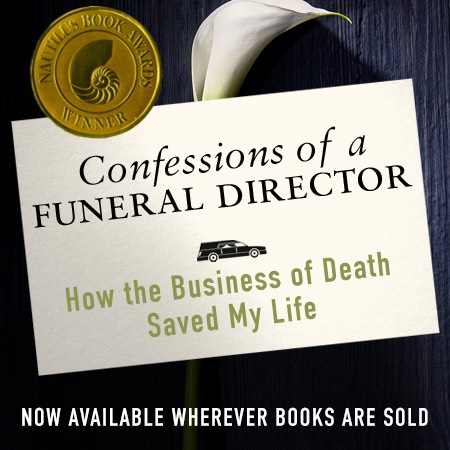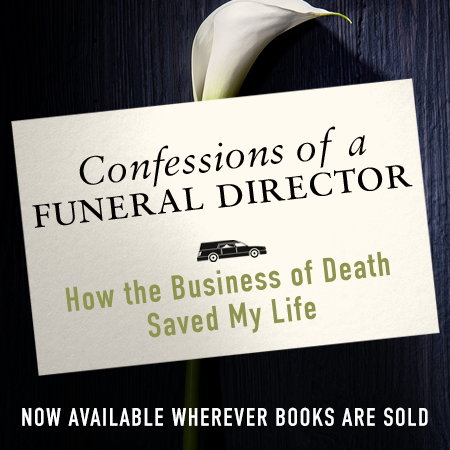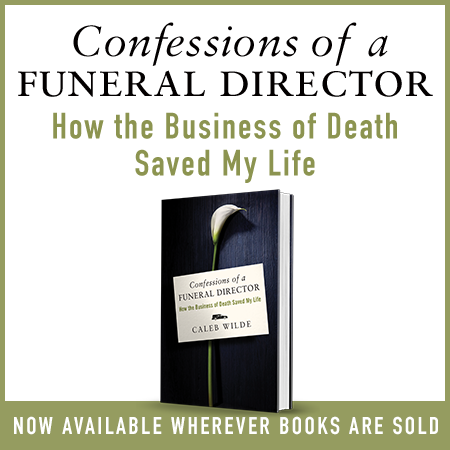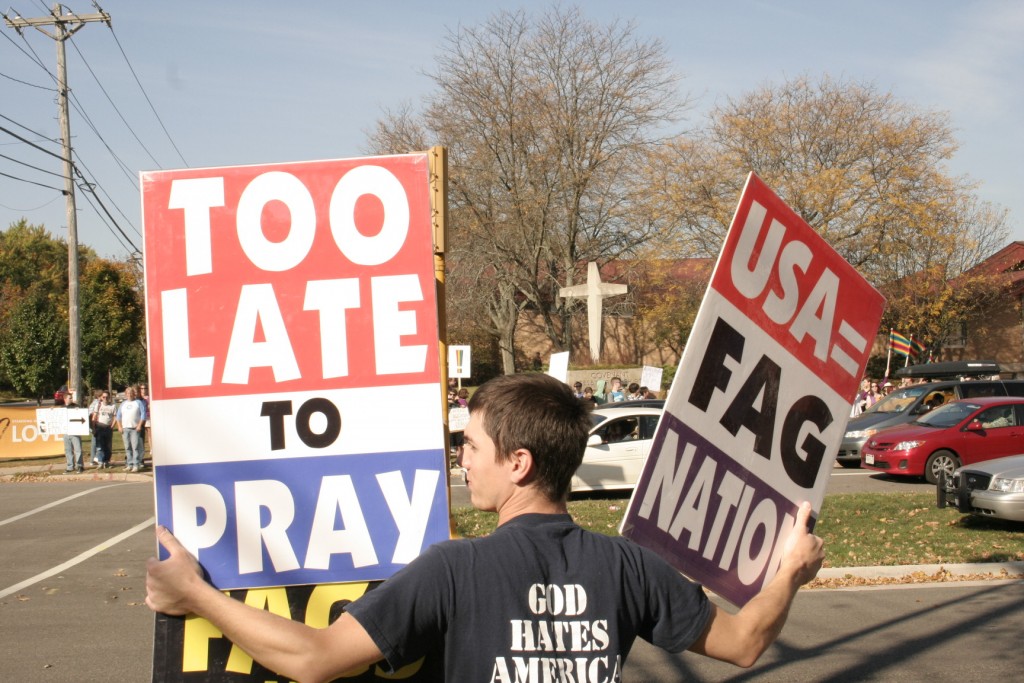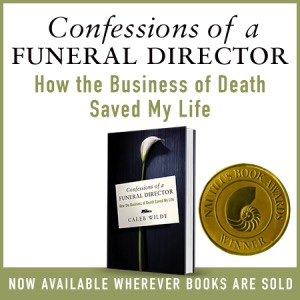Grief
You Haven’t Failed
 Friends, you’re not a failure!
Friends, you’re not a failure!
—
When your loved one dies, you haven’t failed them.
—
When you haven’t practiced the best self care because death has consumed you, you’re not a failure.
—
When you go back to work and you’re still grieving just as hard as ever, you’re not a failure.
—
When the decision is made to take your loved one off of life support, you’re not a failure!
—
When you can’t decide on what music your loved one would want for the memorial service or what outfit they should wear for the viewing, or the type of food for the luncheon, you’re not a failure.
—
If there’s tension in your family — with your siblings or children — you’re not a failure.
—
If you’re just getting by or you can’t do it and you have no idea how you’ll go another day, you’re not a failure.
—
If you need to ask your doctor to increase your antidepressants, if you need to see a therapist, if you need to be alone and away from people, you’re not a failure.
—
If you need people in your life, you’re not a failure.
—
If you need help, you’re not a failure.
—
If you’re angry at the deceased, or you’re not grieving the way you think you should be (FYI, there’s no right way), if you feel guilty, or you laugh and feel some joy, you’re not a failure.
—
If you’re finding new love, you’re not a failure.
—
If you “missed the (sickness) signs”, you’re not a failure.
—
If you haven’t done the laundry and there’s a pile of dishes in the sink, death is messy and you haven’t failed!
—
It isn’t your fault. It wasn’t your fault. You can’t stop death. Like the setting of the sun,it comes, and when it does, never be ashamed of your humanity.
—
Please add your own “If (fill in the blank) you’re not a failure!”in the comments below!
Never Apologize for Your Grief
Note: I was editing this post when a house call came in. I don’t think I’ll be in front of a computer until late tonight, so I present to you a blog post with even MORE errors than normal 🙂
I just got off the phone with a lady who lost her husband back in August. She called because she wanted to order an urn plaque for her husband’s urn, and was inquiring about the details. Could she put a prayer on the urn plaque? Could she put his picture on the plaque? How long would it take to make it? Could we affix it to the urn for her?
“Yes, yes, a couple days, and yes”, I said.
After we were done, she asked, “Can you repeat all that because my mind still isn’t right?”
“Sure. No problem.”
“I’m so sorry” she pleaded. “My mind hasn’t been right since Jack died. I can’t think straight and I’m stuck in my own little world.”
“You’re right where you supposed to be,” I replied. “And your mind is working just fine.”
She thanked me and I told her I’d be in touch in a couple hours to go over the urn plaque draft before we send it to our plaque makers.
I’m not a grief counselor. I do have a certificate in Thanatology, but I’m not qualified to give specific, personalized advice to anyone. I can, though, speak to this shame associated with grief. A shame that comes from a bad idea.
That bad idea is this: that there’s something shameful about feeling weak.
*****
Let’s break it down so we can eradicate it.
WEAKNESS ISN’T …
Weakness isn’t tears. Tears of grief are symbols of love. There’s an outdated idea that says strength is the ability to go through trials and remain unaffected. That we’re all supp It’s a toxic view that’s seeped into our conception of masculinity, and our concept of how we think grief should look.
Weakness isn’t grief, no matter how that grief looks. Somewhere along the way, we’ve attached timelines and a particular set of expectations to grief. There’s this idea that it’s okay to grieve for a couple months, maybe a couple years, but if that grief still exists 10 years later, there’s something wrong with you. There’s another idea that if your grief looks different than our grief, you’re not right. Grief is the outflow of love, and love is the strength of humanity. I don’t tell my parents, my friends, or the people I work for how their love should look, nor do we tell them how long they should love. But we do it with grief and it simply doesn’t make sense.
Weakness isn’t shameful.
Most of our experience that we perceive as weakness, aren’t actually weakness … they’re just very much a part of our humanity. It’s human to cry, it’s human to grieve, it’s human to feel confused, to make mistakes, to try and fail, to change your minds, to change your jobs, your hobbies, to quit, to begin a new, to dream and doubt, make mistakes, to miss an opportunity and to grab one. This is the human experience, and none are weaknesses real or perceived.
But, if you actually have a weakness — something that legitimately hurts others and yourself — don’t approach it from a posture of shame. Approach it from a posture of vulnerability, that you know you’re weak, and that you need help.
WHOLENESS ISN’T …
Wholeness isn’t happiness. You are a whole human when you’re happy. You’re whole when you’re sad. You’re even whole when you’re broken. Because …
Wholeness isn’t the lack of brokenness. We’re not like inanimate objects, like plates, or cars, or clothing. If an inanimate object is broken, it doesn’t have the same usefulness that it did when it was whole. No, humans are the opposite. We become more useful, more powerful, more whole the more we lean into our brokenness.
Wholeness isn’t the only way you can be lovable. The idea that broken things can’t be loved is simply untrue, but the ever pervasive narrative that’s perpetuated through Hollywood and everywhere else is that only perfect things can be loved. Here’s the truth: perfect things are broken and we can be loved.
*****
This is the truth: Death, grief, tears, brokenness, weakness (perceived or real) doesn’t move us farther away from our humanity, it can move us closer. It’s not a question of “are you less of a person when your grieving?” The question is: can you approach your grief without shame, accept the process, and embrace the new normal?
I write in my book:
“I believe there’s a place hidden inside humans that hasn’t been wounded by shame and fear. A place where there’s still innocence, where we haven’t been calloused by the friction of hurt. A place so innocent that we can be ourselves, in all our messiness and peculiarity, and still believe that we’ll be loved. It’s a place where there’s no need to put up fronts of perfection and wholeness, no need to paint our faces and cover our flaws. That place is often exposed by death. We picture death’s hand as cold, capricious bone when it may be the hand of an expert clockmaker, able to turn and fix those intricate parts that still harbor a sense of Eden, where vulnerability is normal, and shame has little power. At Chad’s funeral, Eden had been rediscovered. No one was looking at their cell phones. No one was preoccupied with what they had done that morning or what they had to do afterward. IN onebeautiful moment, everyone was present and shame free.
*****
If you like my writing, consider buying my 2017 Nautilus Book Award Gold Winner, Confession of a Funeral Director (click the image to go to the Amazon page):
All Souls Day: Giving Our Dead a Place at the Table
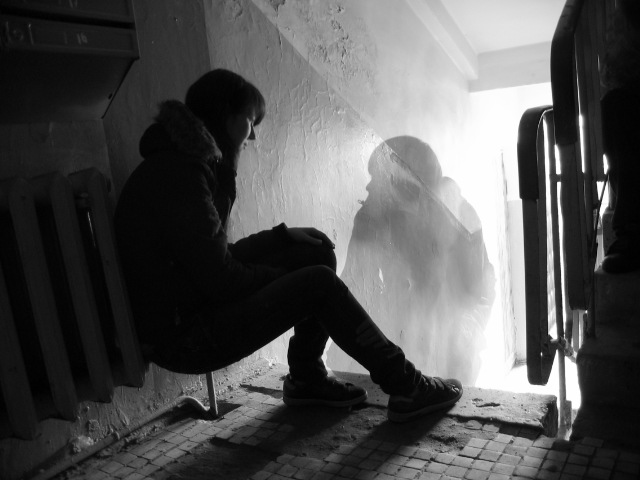
Author: jzool
Author URL: https://www.flickr.com/people/jzool/
Title: she and a ghost
Year: 2008
A couple years ago, my funeral home buried a saint named Jennifer. As far as I know, she didn’t perform any supernatural miracles, like turning water into wine, but she did a kind of miracle that suspends our natural evolutionary tendencies. Per the testimony of her family, she performed her miracles with everyone she met, far surpassing the two-miracle quota required for official canonization.
Jennifer had Down syndrome. Most of the people I know with Down syndrome have a beautifying effect on their family and friends. It’s not necessarily because DS produces more happiness (studies show that depression plagues those with DS), nor is it because caring for someone with DS makes everything easier (although there are reports that divorce rates drop in families that have a DS member), but it seems that position prominence, egotism, and power hunger have little persuasion on these treasured saints of humanity. It’s as if that extra chromosome 21 provides a trade-off, where there’s less mental capability but more character capacity, providing immunity to that desire for survival at other’s expense. And Jennifer had this spades.
Jennifer lived with her parents, Kathy and Don, who were both in their late seventies and retired. On a humid Pennsylvania morning, Don went to wake Jennifer for breakfast and found her lying peacefully in her bed with no apparent signs of a struggle. She was dead.
Jennifer was taken to our county’s morgue where the coroner did her work in trying to determine the cause of death. When a deceased person is a coroner’s case, if the cause of death isn’t entirely apparent, the final cause of death – and the final death certificate – is not issued for a couple weeks while the toxicology tests await their results.
Kathy and Don entrusted my grandfather, my dad and I with Jennifer’s funeral arrangements. Funerals are like a living mosaic. You give away pieces of yourself throughout your life and sometimes many of these pieces come back to form a living piece of artwork … at a funeral. I’ve worked a number of funerals throughout my 15 years at my family’s funeral home, but Jennifer’s display was a masterpiece. This group of people that gathered for Jennifer’s funeral – her living mosaic — created a wonderful aura of kindness, understanding, and togetherness.
In our culture, these living mosaics take place just once in the form of a funeral. And that’s it. But even funerals are becoming less and less engrained in our cultural ethos – for a reason I can’t entirely put my finger on – we’re slowly moving the dead out of the spaces of the living. Maybe we think it’s morbid to give the dead space? Maybe we’d just rather forget … or we think remembering is too painful? Maybe we think this ostracization is a part of closure?
When we do remember, it’s often something that we stumble upon, passively, and hardly ever corporately. We smell our dad’s cologne in a crowded street and we’re suddenly brought to tears. We find a picture of our grandmother stuffed in our desk and our mind is flooded with memories. As beautiful and cathartic as these passive experiences can be, I’d like to think that it would be even healthier if we invited our dead into our spaces through a more active form of remembering like Kathy and Don did with Jennifer when they gave her a communal space even after her death.
A couple weeks after Jennifer’s funeral, the final death certificates arrived at our funeral home with “sudden cardiac arrest due to sleep apnea” inscribed as Jennifer’s cause of death, a cause that was expected now finalized. I called Kathy and let her know I’d be willing to bring the death certificates to her house, she agreed and an hour later she and her husband welcomed me into their home to show me something they made for Jennifer. I write about what I saw in my book:
“Come into the kitchen, she said. I walked through the archway into the kitchen and saw something I’d never seen before. Jennifer’s place at the kitchen table was covered with a shrine – a collection of items that had been meaningful to Jennifer. I had associated a shrine with the worship of a demigod or saint, but Jennifer’s family took the broader meaning. They dedicated this spot entirely to the memory of their daughter.
“We thought it’d be a good idea,” Kathy said. I was slightly taken aback by the whole thing. If you had asked me the first word that came to mind when I saw it, I would have said ‘weird’, maybe even ‘pathological’. But after Kathy started to explain the different parts of the shrine and their meaning, I understood my reaction had been hasty.
Looking back, I see that my initial problem with Jennifer’s shrine was that it didn’t portray that strong American sense of tackling and overcoming grief. Americans love to problem-solve, and we hate sitting in the tension, and many of us, even some therapists, see grief as a problem that needs solving, a wound that needs healing, and a chapter that needs closure. But Jennifer’s shrine stood in the tension of avoidance and closure and acknowledged that grief is present, it’s present in this home, and that’s okay.
Somewhat unknowingly, Kathy and Don were practicing All Souls Day, the day some believers actively give their dead space among the living. Days like All Saints and All Souls are more deeply felt in other cultures that know how to exist in the tension of the presence of our dead, but for many of us, it’s a nearly forgotten day that comes after the costumes and candy of Halloween.
The term “saint” has a lot of baggage attached to its meaning, and maybe that’s where we lose our way. We’ve packed it with religious meaning and holiness and miracles. But it’s a term that we need to reclaim if we’re to venerate the lives of our elders, and find their power and love in the present. If we remove the baggage and strip it down to its core, we’ll find we all have had saints in our lives, saints who have molded us for good. Maybe it’s your mother who tirelessly encouraged you to pursue your dreams. Maybe it’s your grandfather who stepped in when you Dad left home and family. Maybe it’s the family matriarch who guided your family with her prayers and grace.
These dead – our saints – need to have a space at our table, sometimes literally like Kathy and Don’s shrine, sometimes figuratively. By connecting to our dead, by actively remembering our saints, by swinging back into the past, we can be more settled in our present and propelled into our future, connecting the circle that is so often broken by when the dead are excluded. This is about making us whole by accepting that things gone are still present. It’s about self-realization as an individual and as a family by letting our history inform our inner person. It’s about giving voice to a people that although dead are still speaking. It’s about actively remembering by making sure that our saints, like Jennifer to Kathy and Don, still hold space in our lives.
During this season of Allhallowtide, I’ll leave these thoughts with this question: What are some ways you and your family can practice active remembering and bring your saints into your present?
My book is now available for purchase (click the image to see the Amazon page):
Seven Characteristics of the Broken Open Heart

Author URL: https://www.flickr.com/people/sweethaa/ Title: A Broken Heart Year: 2009
I write in my book,
When hardship comes, some hearts are broken apart, and like pottery or glass, those hearts are difficult to put back together. But other hearts are broken open like a fist that opens itself to receive and give back, or like clay that adapts to pressure. Whereas death’s wildeness can shatter the well-ordered, rigid life, it can open those who have learned to flow with the waves of life. The broken-open heart, the heart that has been molded by pain and suffering, knows to “be kind, for everyone you meet is fighting a battle you know nothing about.”
One. One of the factors that differentiate the broken open heart from the heart that’s broken apart is this: the broken-open heart doesn’t believe that brokenness is shameful. The broken open heart starts with the assumption that it’s okay to be broken. It’s okay to feel deeply. It’s okay to have your life washed over by the emotions of death. On the flip side, sometimes we respond to our brokenness from a place of shame and fear. We fear our emotions. We fear grief. We fear being sad. We fear death itself and we absolutely fear the perceived imperfections of such brokenness. “Because anything that’s broken isn’t perfect and isn’t lovable,” we think.
Two. The broken open heart doesn’t see emotional turmoil as an unlovable imperfection. The idea that broken things can’t be loved is simply untrue, but the ever pervasive narrative that’s perpetuated through Hollywood and everywhere else is that only perfect things can be loved. Somewhere deep inside the broken-open heart resides a belief, however small, that says, “perfect things are broken and we can be loved.”
Three. Befriending death and all the brokenness, fear, and perceived imperfection that comes with it often gives us room for others’ pain. By accepting our own pain and stripping it of shame, we’re able to accept the pain of others. By accepting our own perceived imperfections, we can more easily accept the perceived imperfections in others.
Four. “It uses its own pain to find love for those we don’t like.” Simply put, the broken open heart has room for other broken things. Everyone can see the broken imperfections of others, but the broken open heart looks past the imperfection others and does the courageous work of seeing the pain behind the brokenness.
Five. “The broken-open heart seeks to understand.” When we are able to befriend our own brokenness, we start to see the deep connection between pain and real-world actions, and attitudes. In fact, many of the people we don’t like, people who are different than us, or people who think differently than we do aren’t inherently different than we are, they are just responding differently to the pain in their lives. If we can understand a person’s pain, we can begin to understand the engine of their being.
Six. The broken open heart is “slow to take offense and quick to forgive” because when we understand the pain behind the actions when we allow ourselves to lean into the pain, we can see that their offense is more a response to their pain than to us. Yes, pure evil exists in the world, but even those that are evil are responding to evil done to them. Sometimes people are just mean, but most of the time they’re just projecting their pain onto us.
Seven. “The broken-open heart uses grace to build and bind the broken.” When we find a path through our brokenness, we learn a very hard-earned lesson: finding wholeness doesn’t come through shame, it doesn’t come through criticism, it doesn’t come through fear of punishment (or fear in general). Our path through brokenness is made possible by love and grace.
Most of us guard our heart and for good reason. We’ve been hurt by the ones we have loved, by those we’ve trusted and those who we’ve given an intimate piece of our souls. But somewhere in the midst of all that heart protection, there’s a little opening that still harbors a sense of trust, courage, and love. As I deal with my own brokenness, and as you deal with yours, I hope you find ways to fan the embers buried deep within your heart. I hope that we can all find a way to be broken open.
If you want to read more about my broken-open journey with death care, here’s the book I wrote.
10 Simple Ways to Avoid Being an Asshole around Death
One. Don’t use a death as an object lesson
The first piece I ever wrote for a magazine was about the death of Jackass crew member Ryan Dunn and how people were using his reckless driving death as an object lesson.
Even though it’s tough to do, especially when we want to teach our kids a lesson about “why drugs are bad” and “why you shouldn’t drink and drive”, turning a life into an object lesson grades against the heart of what it means to be human. People aren’t objects. And death isn’t a lesson. Death is this cauldron of feelings, loss, void, laughter, fear, … it’s everything that is human. Let’s keep it that way.
Two. Remember the Circles of Grief
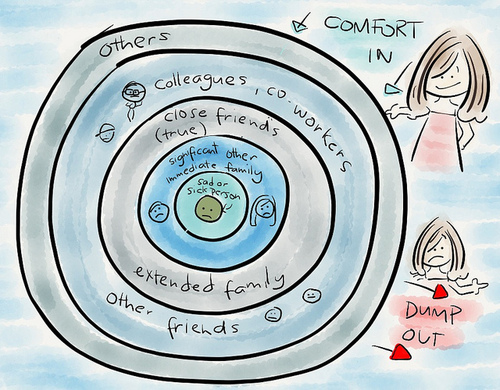
The circles of grief (AKA the Ring Theory) is this: Imagine concentric circles (see photo above). The smallest ring in the center is the person closest to the deceased, whether that person is the deceased’s spouse, a parent, a child or all of the above. The next circle is representative of the immediate family and very close friends. A third ring could be extended family, close co-workers, etc. A fourth ring might be schoolmates, or church acquaintances, etc. The rings keep going.
The idea with the circles of grief is that comfort always goes in, and dumping always goes out. If you’re a secondary relationship, it’s not your right to dump all of your grief on the spouse of the deceased. If you’re a fourth ring relationship, you should NOT expect a close friend to comfort you. If you’re the closest to the deceased, it’s okay if you dump outward. And if you’re an outer ring, you should expect to comfort the inner rings. These circles act as a great template for any of us who are ever in a position to comfort the bereaved. If you act otherwise, you’re probably being an asshole.
Three. Avoid cliches
When people use comfort cliches like “you’ll see him again someday” or “things will get better”, they are often more concerned with comforting themselves than comforting the bereaved. Comfort cliches are the practical outpouring of death denial. Cliches are band-aids that people try to put on a massive wound. These band-aids oversimplify the problem, they minimalize grief and they trivialize the death. If you don’t want to be an asshole around death, avoid them at all cost.
Four. Don’t Join Westboro Baptist Church
Just saying.
Five. Don’t Say or Write Negative Things about the Deceased
This is simply death etiquette. It doesn’t matter if the deceased was the worst bastard you’ve ever known, it’s never cool or respectable to take a shot at someone when they can’t defend themselves. And nobody is more “unarmed” than when they’re dead.
Six. Don’t Fill Silence with Words
“The real art of conversation is not only to say the right thing at the right place but to leave unsaid the wrong thing at the tempting moment.” —
Dorothy Nevill
When you’re around grief, sometimes you speak too soon, so you decide to wait in silence. Your friend starts to cry. You respond to her tears with your own. Even though you want to respond with words, you know this isn’t the time for words. There are no perfect words here. There’s no perfect anything here. And so you wait.
You stay. Listen. Silence. You take her pain into your soul. Hours pass.
You’ve spoken, not with words or advice; not by trying to solve the problem; nor by placing a limit on your time. You’ve taken the uncomfortable silence, allow the grace for tears, for brokenness; you’ve allowed yourself to sit in the unrest without trying to fix it.
Seven. Don’t Make the Funeral about You
This past Saturday night, I stood there behind the register book, striking up a conversation with people as they enter the sanctuary. The viewing line snakes around the church, down the hall, and into the basement as we try to extend it through the corridors of the church so as to keep the line from going out into the hot and humid weather of a Pennsylvania summer. The family of the deceased is taking their time, talking to each and every person who has come out on this sweaty night.
“Other funeral directors stand by the family’s receiving line and tell them to keep their conversations short and simple”, one person stated.
“We don’t do that”, I said politely.
Another couple comes through the line and complains that they’ve been standing in line for half-an-hour AND by the look of things, they’ll probably be in line for another half-an-hour. “Can’t you do anything?” they beg.
After having this conversation about 10 times over the next hour, I’m getting tired of my joke and I’m getting tired of people complaining.
I want to pull them close to my face and whisper, “This isn’t about you.”
Perhaps the greatest loss that comes with the drone of our busy lives is that in losing silence, we’ve lost patience, and in losing patience we’ve become so inherently selfish that when we go to a funeral we forget that it’s not about us. Too many of us have become funeral assholes.
Eight. Don’t Use Death to Evangelize
Our funeral home’s website has online obituaries for those we are serving. When someone goes to an obituary on our website, they can write out condolences and post it for the family of the deceased. A couple years ago we had to ban about five users who went to every one of the obituaries and left a “condolences” that said something like this: “Although we don’t know you, we are sorry for your loss. Use this time to contemplate your salvation and your relationship with Jesus.” These “condolence evangelists” may have been well-intentioned, but they totally missed the point.
The point is to remember the deceased and be near to those who loved and lost. The point isn’t to “get people to heaven” but to bring heaven down through love, community and lots of really good comfort food.
Nine. Be Culturally Sensitive
We all know that when somebody dies, bacon is by far the best dish to bring the grieving family … unless that family is Jewish or Muslim. We also know that cremation is a viable option, but let’s not preach about the sins of embalming and the environmental impact of a full burial to an Eastern Orthodox family. Don’t be THAT asshole.
Ten. Avoid Grief Timelines
Validate, validate, validate. It’s okay if somebody is grieving years after they lost their spouse. It’s okay if their grief expressions look different than yours. Sure, some grief might need the help of professionals, but that doesn’t mean the grief is wrong or sick. And because we validate, we never, never, never say, “Well, you should be over this by now!” or “you’ve been grieving for two years now, it’s time to move on.” There is no timeline for grief, but there is no timeline for love. We let love express itself and we validate that expression (unless that expression is cutting off the heads of cats and using those heads to make a mosaic of the deceased’s face. At that point you call Dr. Phil.)
*****
If you like my writing, consider buying my 2017 Nautilus Book Award Gold Winner, Confession of a Funeral Director (click the image to go to the Amazon page):
